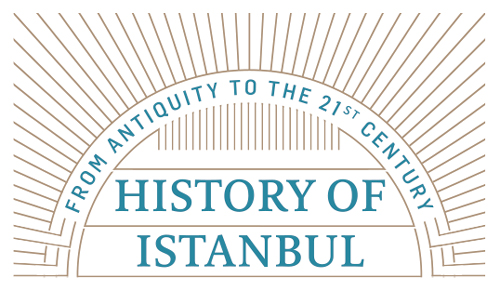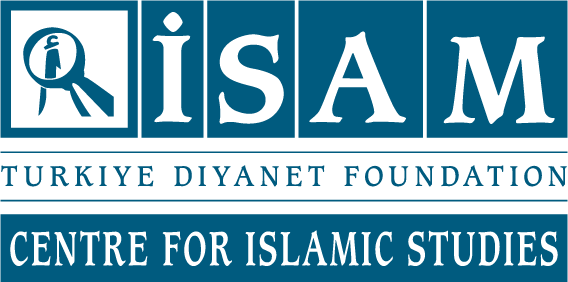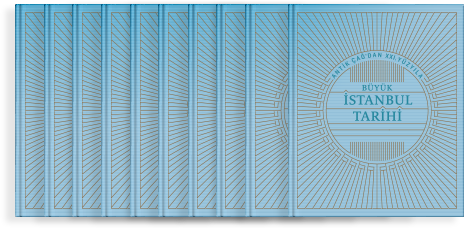We know that you are a resident of Istanbul. You were born in Istanbul, but because your father, who was a judge, relocated to different cities, your childhood and early years were spent in Viranşehir, Uzunköprü, Çorum, and Ankara. Once you became a student in the Faculty of Literature at Istanbul University, you never left. Let us, if you wish, begin our interview with your first impressions of Istanbul.
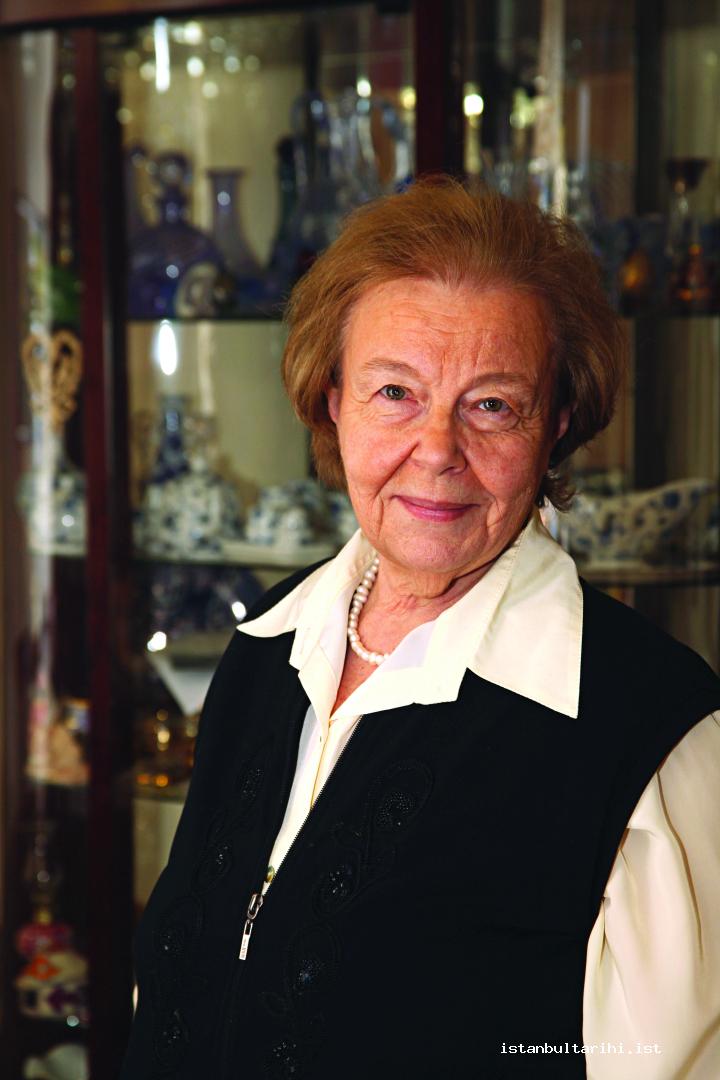
Yes, Istanbul is the place where I was born. I was born in Haseki Hospital. My mother chose this hospital because my father was a prosecutor in Viranşehir [Şanlıurfa] at that time. My mother naturally wanted to give birth to me near her family, so she returned to Istanbul. My mother is also from Istanbul. She was born on Kınalıada Island; my grandfather was a ferry captain for the Şirket-i Hayriyye. He was reportedly a very handsome man; his mustache was like those of the writers of the Fecr-i Ᾱtī (the Dawn of the Future) literary movement. I was told that my sister’s eyes were like his. Every evening the young girls of the island would pass by my grandmother’s house and tease her, saying, “We’re going down to meet ‘yours.’” Apparently a lovely brunette beauty, as far as we can see by her photos, my grandmother would answer them back by saying, “Go ahead and meet him, but he’ll soon come to my door.” My mother lost her father when she was two and her mother when she was six years old. Unfortunately, that side of her family is lost. My mother was raised by her maternal aunt and her husband. Aunt Zehra and Uncle Besim thus became my grandparents. My mother’s Uncle Besim and his family were from a family whose lineage can be traced as far back as the conquest of Istanbul. There is a Yazıcı Mosque near Dragos and this family was its trustees. I suppose they still are.
This is your mother’s side...
Yes, as my mother was orphaned, she became their child. They had a daughter, Auntie Fikret. But she died at a very young age. My mother grew up in this old Istanbul family. My grandfather (Uncle Besim) had three siblings and four or five foster siblings, their spouses, and children. The whole story of Istanbul can be found in this family. From what I heard, it was an incredibly colorful family. Unfortunately, we were unable to maintain our ties with all of them and we eventually lost touch, and that was that. My mother’s grandparents on her mother’s side left the Caucasus with a golden belt. Her father’s side came from the Balkans. It was as if all the wars during those decades, such as the war of ‘93 (1877-78 Ottoman-Russian War), broke out so that we would be born. It sometimes makes me so sad that I become uncomfortable. It is like black humor.
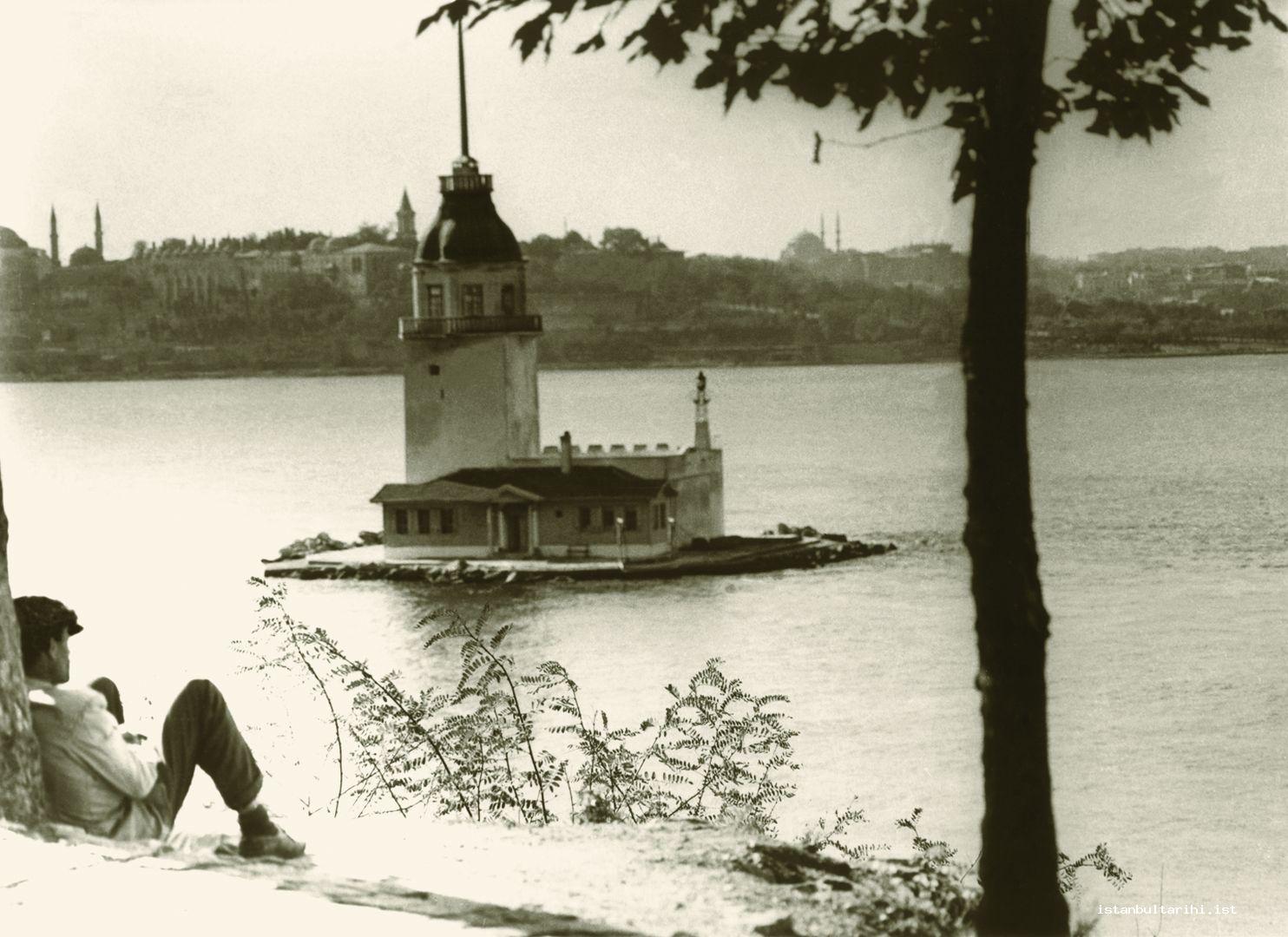
But still, the family was like an encapsulated version of the empire -one side from the Caucasus, and the other from the Balkans.
Yes. All of my father’s side came from the Balkans. We listened to what my grandmother -we lost her in 1963 – related as if it was all a tall tale. I later discovered in books how tales actually relate to life. Sometimes I sum up the story of our family like this: a cradle made from a kneading trough for dough and a golden belt. This is the whole adventure. My grandmother’s mother, Melek Hanım, is buried in the hazire (private burial section of a mosque) of Sokullu Mehmed Pasha in Eyüp Sultan. Of the people in our family from that generation, hers is the only grave whose location I know; I don’t know of any other’s grave. The reason she is buried there is because she breastfed one of the milk siblings (babies breastfed by a wet nurse) of the Sokullu family. I don’t know where the others are buried. The stories are disjointed. I was born in Haseki Hospital. Because all the members of that large family would flock around my cradle and then possibly snatch me from one to another, my father wrote a letter - as if I myself had written it- fearing that my mother would not prove strong enough to protect me or that I would somehow be hurt by enthusiastic relatives. I published that letter later. I mean, sometimes you do not know or simply cannot remember who was a relative or a friend, or who was close and who was distant (among all the people who were present at the time of my birth). And this is also because my father was a judge.
A judge or a prosecutor?
First, he was a prosecutor, and then he became a judge. But he had worked in Viranşehir as a prosecutor. We were unaccustomed to the climate in Viranşehir. Everybody was plagued by malaria and we often became ill, so much so that once the doctors sent me to Istanbul fearing that I would die. My mother took me to Şişli Etfal Hospital. The first buildings I ever visited in my childhood were probably hospitals. The doctor there told my mother that I had only a 1% chance of survival, whereupon my mother left the hospital crying and went home. Her uncle-in-law said, “If the situation is so desperate, there is no use causing the poor child more pain. Go, take your daughter!” But the hospital officials told her, “She is ours, you cannot take her!” Anyway, only Allah knows who dies and who lives. I recovered after fifteen days and I even took to imitating the doctors. That was my introduction to doctors and hospitals. And then Mine, my sister, was born in Uzunköprü. We always came back to Istanbul for the summer holidays. There were two places in Istanbul where we stayed; one was in Altunizade. There was a green house not far from where the Capitol shopping center is today. That was my aunt’s house. Actually, it was the house of the sister of my grandfather, Besim. Her husband was Rifat Kalpakçı. There were two houses side by side. One was a large mansion. It was later used as a school. I don’t remember the details exactly. We would go there every holiday. Like others, they fell into poverty from great wealth. For me, it was a strange but pleasant place. First of all, it was very crowded. Every meal was like a wedding banquet, with ten or twelve people. I don’t remember a meal when there were fewer people than that.

How old were you during these times that you recall?
I guess the times that I am able to remember start from 1945. Some of the family lived on the other side, that is, on the European side. My uncle and his family at that time lived on a street with steps descending from Pierre Loti Street on Divanyolu. Then they moved to their house in Draman. I remember all of these houses very well. My uncle’s name was Salih and he was a very nice man. During Turkey’s War of Independence, certain confidential things would come and go from Ankara. I suppose they hid the documents in the broken and hollow horn of an ox, and my uncle took the documents to their prearranged destinations disguised as a villager. Presumably, my aunt’s house in Altunizade was a passage station, but nobody would tell us anything in detail so we never learned the details of the story. Little details have remained in my mind, just like a tale. My uncle was physically a small man, and he had blue eyes. He was the head of the municipal printing house. Through him I met Asım Sönmez. My uncle called him “the disciple of Yahya Kemal.” Whenever Asım Sönmez saw me, he would recite a piece of poetry by Yahya Kemal. As he recited the poems, his lips would shrink and his face would contort into a funny shape. I do not think he had any teeth. This is another childhood memory I can never forget: In Çamlıca, on a street which is now known as Akagündüz Street, formerly known as Yeniyol, there was a tramway stop on the corner. My mother was taking me somewhere and we were waiting for the tram. Suddenly a man came walking by, swinging his cane; when I caught sight of him, I screamed and hid behind my mother. Mom said, “Don’t be afraid, my daughter!” Then the man said the same thing and left. After returning home, we related what had happened to those present and they told me his story: apparently, he had had come into an inheritance and was a very noble person but he had lost everything to another man through gambling. When we settled in Istanbul many years after this, our house was next to Millet Park. A man lived in one of the nearby wooden houses; both his legs had been amputated and he sat on a sort of wooden stool and dragged the stool in order to get around. It turned out that this man was the person who had robbed the other man in that notorious gambling game. Like I said, everybody had a story, a tale of their own. There were so many families then who had become poor, and who, because of that, could not afford the upkeep of those large houses. Moreover, it was prohibited by law even to drive a single nail into them. Then a fire would start and destroy these mansions. The big nails, red hot from the fire, would shoot out from their holes like bullets. The fires continued into the 1960s. I witnessed many fires. I don’t know how my aunt’s big house was demolished. There were three siblings, who all claimed the house was theirs. Typical story… The upper sections of Büyük Çamlıca in those days were covered with vineyards. I was a very well-behaved girl. They would take me there and give me a huge bunch of grapes. I wouldn’t pay any attention to what was going on around me until I had finished the bunch. Fruit and vegetables were plentiful. In particular I remember the fruit trees. You would hear comments, such as, “The grapes of that garden are so sweet, the apricots in so-and-so’s orchard are better than others.” Overall, everything was very pleasant.

You said you lived near Millet Park. Could you please tell us a little about that park? The extravagant man whose story you recounted sounds like Bihruz Bey, the protagonist of Araba Sevdası. And Millet Park was actually Bihruz Bey’s park.
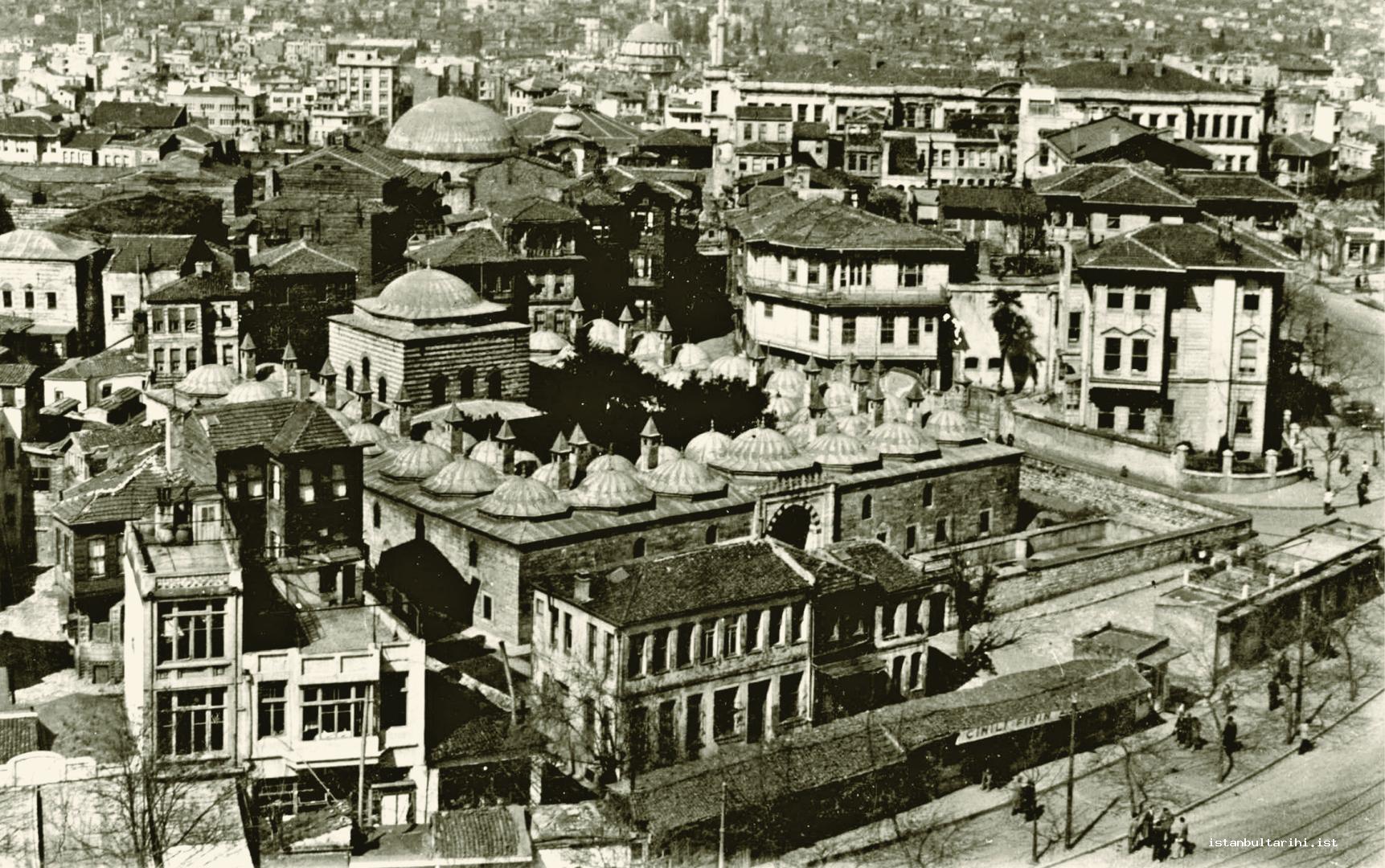
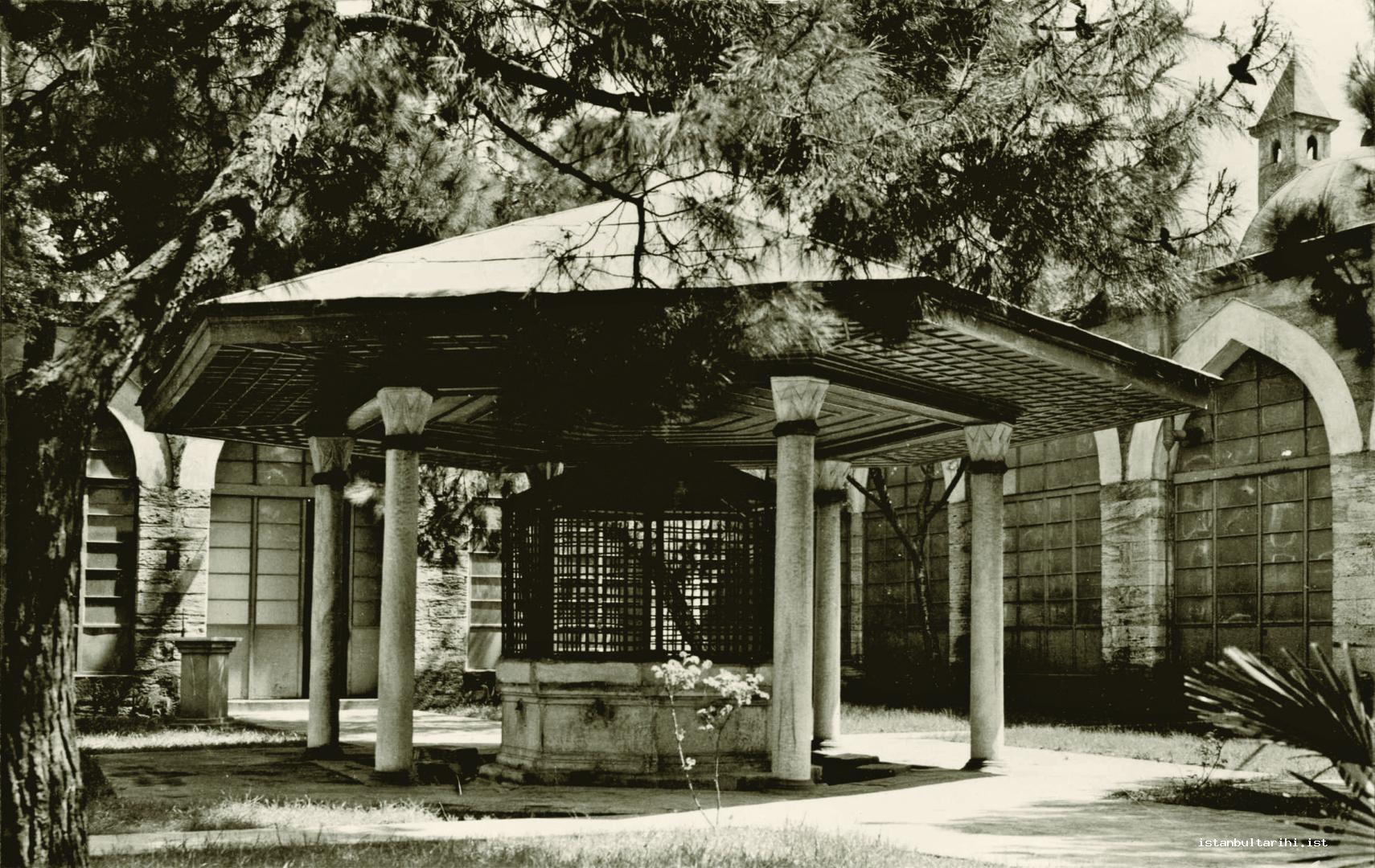
That’s what we called that park. When I read Recaizade’s Araba Sevdası, I said to myself, “That’s where we live.” And we started to have picnics there -Gaye Barlas, Bilge Seyidoğlu. We were very good friends; they would come to our house. My mother would cook meatballs and we would go and eat there. With a book in our hands, we would follow Bihruz Bey’s route and laugh and have fun.
Were there large mansions around the park in the years you lived there? For instance, the mansion of Mustafa Fazil Pasha, the patron of the Young Turks, was reportedly right next to this park. I think it was actually he who commissioned the construction of Millet Park. On the other side of the park there was the mansion of Şerif Muhittin Targan’s father.
I really have no idea. No, I do not remember such obviously beautiful mansions. But there were dilapidated wooden buildings that immediately gave the impression that they had once been occupied by wealthy people.
There was also the Esma Sultan Palace a little further on, the palace where Sultan Mahmud II breathed his last.
I don’t know that place. Everybody in the neighborhood would talk about pashas and princes all the time. They had been neighbors, I guess. I was probably not interested, but I do remember that Yusuf Kemal Tengirşenk had a fantastic house in Kısıklı. He had been one of my father’s professors at the Faculty of Law. He would come and visit us, and I also remember my father taking me to his house once. His wife, Nazlı Hanım, was a very gracious and lovely lady, and the garden was wonderful. Tengirşenk was writing his memoirs at the time and he told us many things. I now regret that I did not write them down. And we met Hamdullah Suphi Tanrıöver twice on Çamlıca Hill while enjoying the view of Istanbul. On both occasions he said, “Istanbul is watching its sultan, and the sultan is watching Istanbul.” He was an old man who had aged beautifully. I have a story about that part of Istanbul which embarrasses me: I told you, we lived around Millet Park for about a year and a half, and then we moved to Kuşbakışı Street. As you know, that street goes down to Beylerbeyi. My mother had a niece called Hālide Abla, who was such a lively person. One day she told us, “We are going to visit so-and-so Hanım today.” I began to whine and mutter, “Why should I go to the house of somebody I don’t know?” “But she is a very courteous lady,” they told me. “I don’t care!” I said. The grumpiness of early adolescence, you know. I was actually a very uncooperative child. Anyway, we went there. Well, what do you think? It was a slum. The roof was tin. “Will they actually take me into this filthy place!?” I said to myself and began to grumble more. The door was opened by a black person with a very lovely smile. She welcomed us in very good Turkish and ushered us in. I was so embarrassed by what I had said. I felt ready to sink into the earth with shame. Such immaculate, snow-white furniture covers, lacework . . . I sat down in a corner; they served us tea in squeaky clean, sparkling glasses. I never felt as embarrassed as I did that day. But perhaps it became one of the landmark events in my life. Then there was this lady living next door to us. Poor woman, she was crippled; she probably had a dislocated hip, because she had great difficulty walking. She had a burly, surly, imposing husband, who was a porter. He was so grumpy, but as he grew older, he became a very nice person. He underwent a dramatic character change. Then he became bedridden. The disabled woman took care of her bedridden husband so well. There was no bad smell. I mean, there was no air of illness in the house. These were some of the experiences that taught me not to judge people by their appearances. There is something else I have never forgotten either: we were sitting on the ground floor of the house near Millet Park; the house had a large veranda. My mother’s aunt and nieces were dressmakers, and there was a Jewish man from whom they bought large amounts of sewing materials. He came to us one day; he had a baggy robe as if he had just jumped out of a Karagöz shadow play. He had known my mother since her childhood. Anyway, my mother did not want to buy anything from him that particular day. My mother said, “I won’t buy anything today.” The old seller sat on the old couch on the veranda. He tried to wheedle my mother into buying his goods. For me, it was really fun to watch. But I pitied the old man at the same time. When my mother became stubborn, nobody could persuade her otherwise. The man finally despaired of her, hung his head and said, “So, you mean, you’re really not going to buy anything from me today?” Mom snapped, “No, I am not!” And the man said, “May you grow old, inshaallah!” What a beautiful phrase if you look at it; it is not a curse; it’s a prayer.
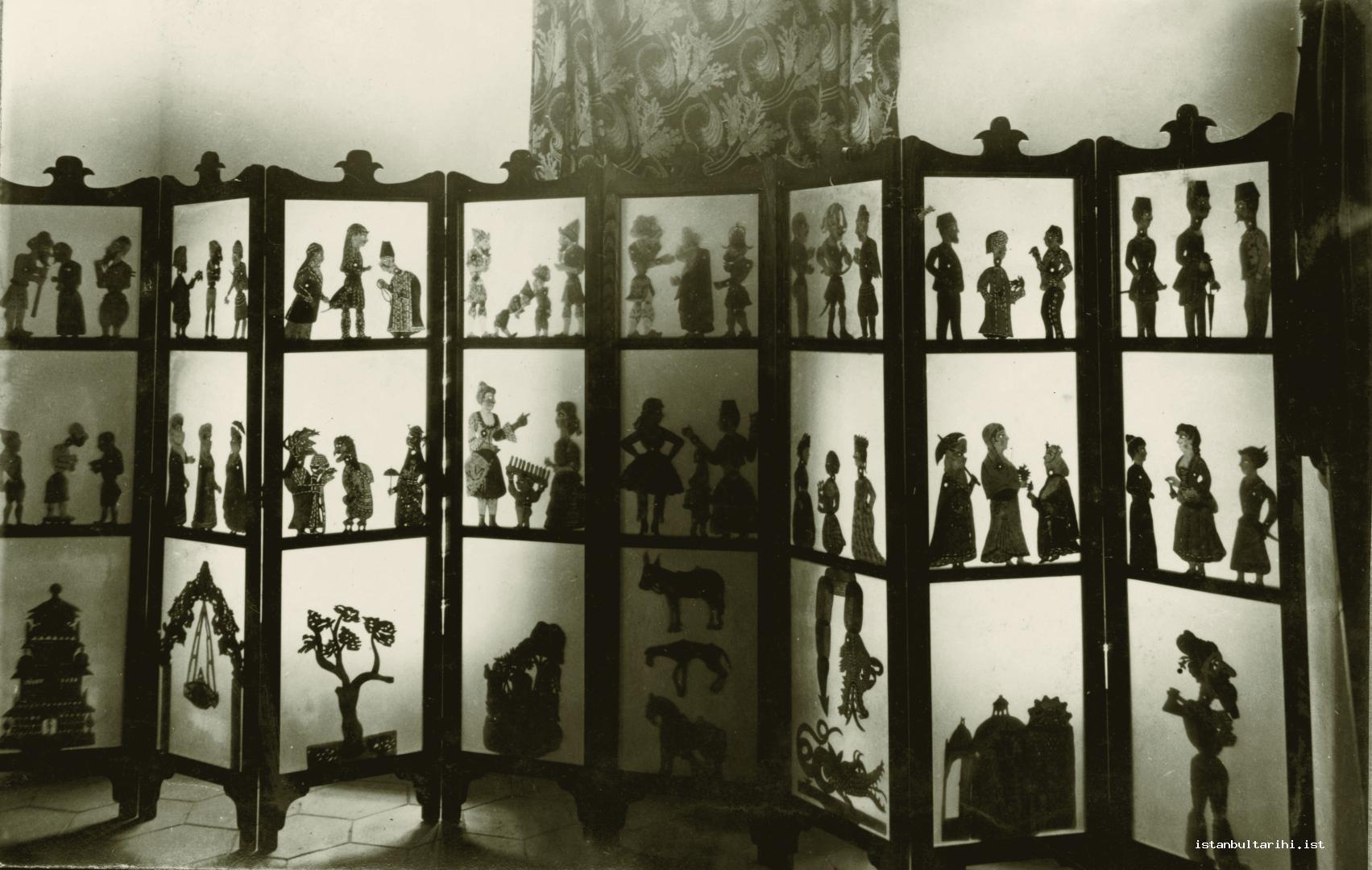

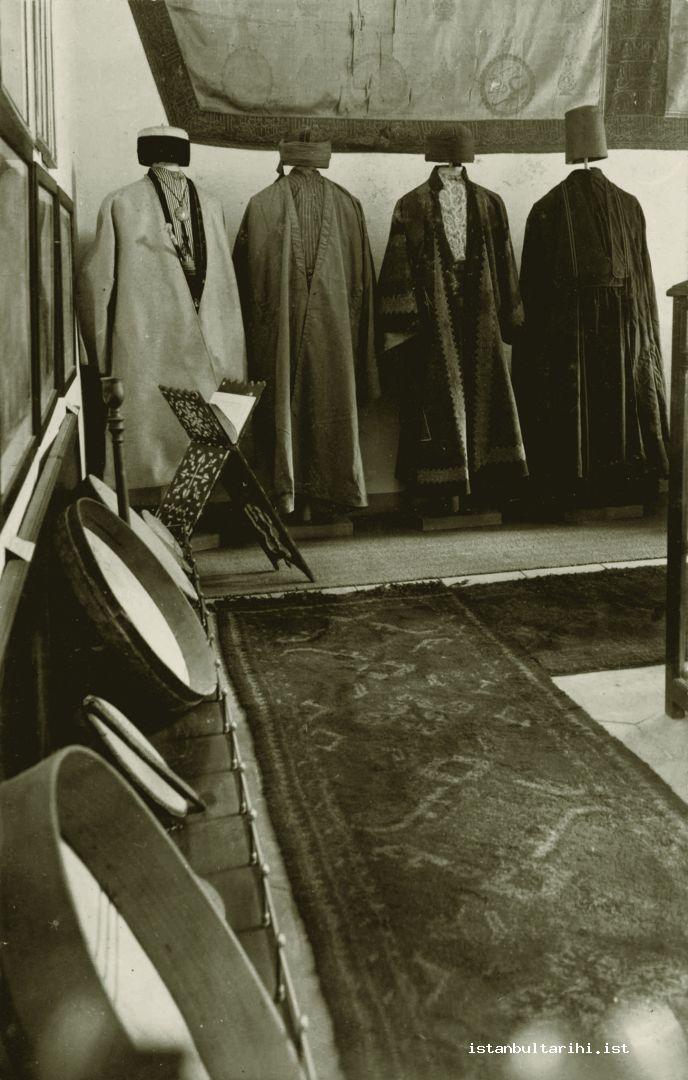
The man apparently wished your mother a long life. Istanbul obviously has a very special use of Turkish and its own idiomatic expressions.
Of course. My mother died at the age of eighty-two. Sometimes I would tell her, “See, that man’s prayer has been granted!” There was also our milkman. People were very active and energetic then. We were living on Kuşbakışı Street at that time. It was a very snowy day. It was very different back then when it snowed in those neighborhoods then it is today. The milkman appeared in the street one day, and we could see that he was very cold. “Come on in!” we shouted to him. He sat down with us and told us his war stories. I asked him, “If another war broke out, would you still go?” He said, “Of course! Are we going to allow infidels free rein in our lands?” That neighborhood was so much fun for me. My Aunt Meliha was a dressmaker. A very cheerful lady, she would relate so many stories to us. I remember my grandfather very vaguely, as if in a dream. I remember him reading the Qur’an on his bed. My memories of my uncle are not like that. He was a very lively person and lived a long life. I learned about Karagöz from him, for example. When my mother told him she was going to name me İnci (pearl), he said, “What do you mean İnci?” If you name her İnci, I’ll call her Boncuk!” (bead; a reference to the Turkish colloquial binomial, İnci boncuk, meaning trinkets.) And as long as he lived, he called me Boncuk. We visited the family elders on festival days and they came in return to stay with us for a night between the two religious festivals.
What do you remember about Altunizade at that time? What was it like?
This is the Altunizade of that time: we had our ice-cream shop, but we did not go there often. Going there once a week was a ceremony in itself. It was right next to the Altunizade Mosque. It is indeed a very beautiful mosque.
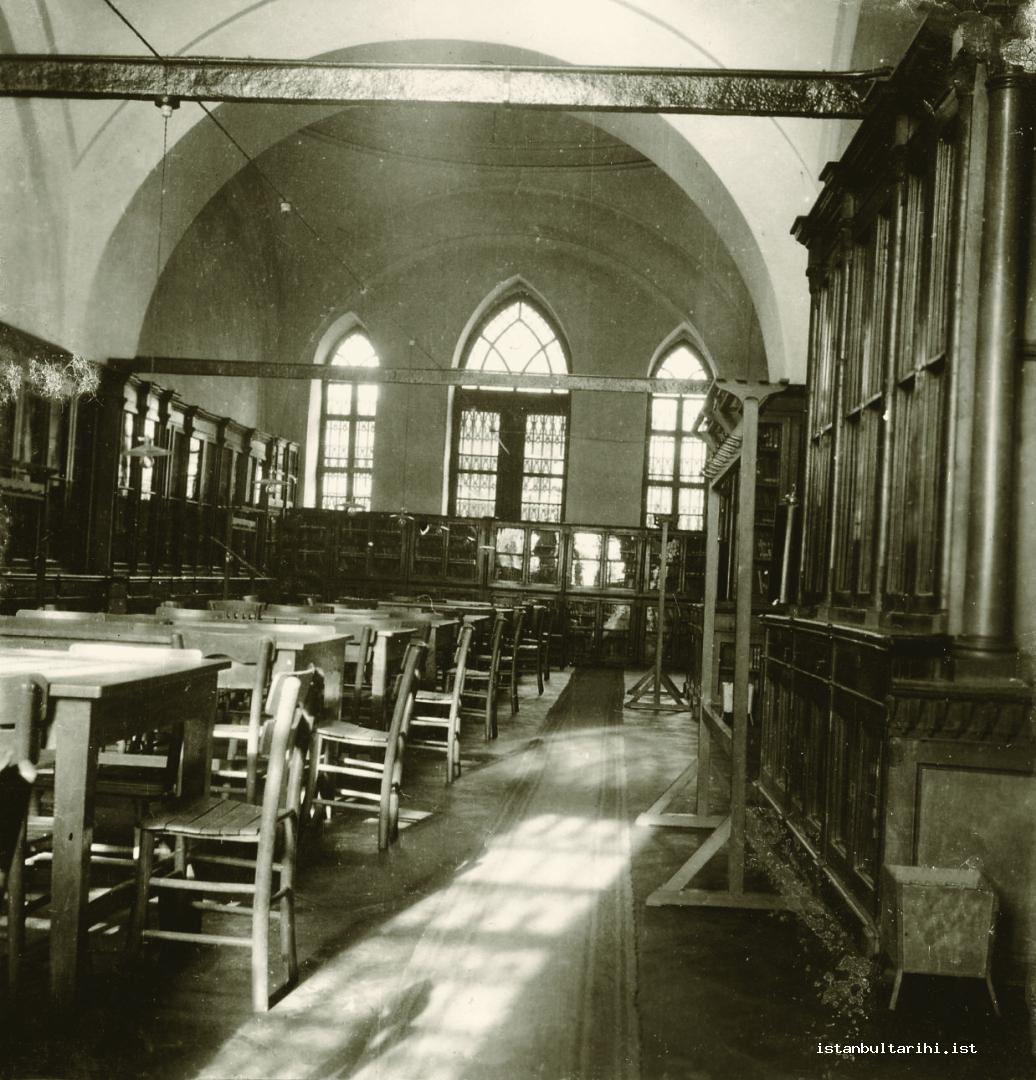
Given the mansions that have survived to date, we can safely say Altunizade was once a beautiful neighborhood. Luscious green...
You’re right. There were mansions and smaller houses like mansions. But they were all in ruins because, as I said, people were unable to provide for their family’s basic needs, therefore they had no money to repair the mansions. They all suffered the loss of wealth they had once enjoyed. Such a sad thing. Those relatives of my mother -we were particularly close to one of them who was descended from the Sokollu family. They had previously led affluent lives. They had a waterside mansion in Sütlüce and a mansion in Kartal; they were unable to either live in them or sell them; some people seized the places from them and did not pay them any rent. Their owners left Istanbul and had great difficulty earning their livelihood. Another one of our relatives worked for years as a dressmaker. Fortunately for her it had been her hobby before. Now Altunizade has become a very ugly place. Couldn’t it have been planned more properly?
Despite its current state, it is still one of Istanbul’s best locations. They do not give permission for a lot of high-rise buildings to be erected. You said that you stayed in your uncle’s house in Pierre Loti when you crossed over to the other side.
I loved the street where we stayed in Pierre Loti very much. In later years, I looked for the street, but could not find it. Those neighborhoods are now unrecognizable. I vaguely remember those days, but -you’ll be surprised- I remember, for example, the beautiful straw mats we sat on during summer days, and an old auntie. And also the apples. They were such nice apples. We loved the bay window of the house. We would sit there and hang our legs down. They would buy us simit (sesame bagels). I remember the inside of the house. The lamp glasses were cleaned frequently because the electricity would go out so often. The interiors of the houses in that neighborhood were very nice; it was as if they were washed with light. The reason why Tanpınar and most Istanbul authors wrote about light was probably because of those well-illuminated houses. They were not dark, like medieval houses; they were very beautiful.
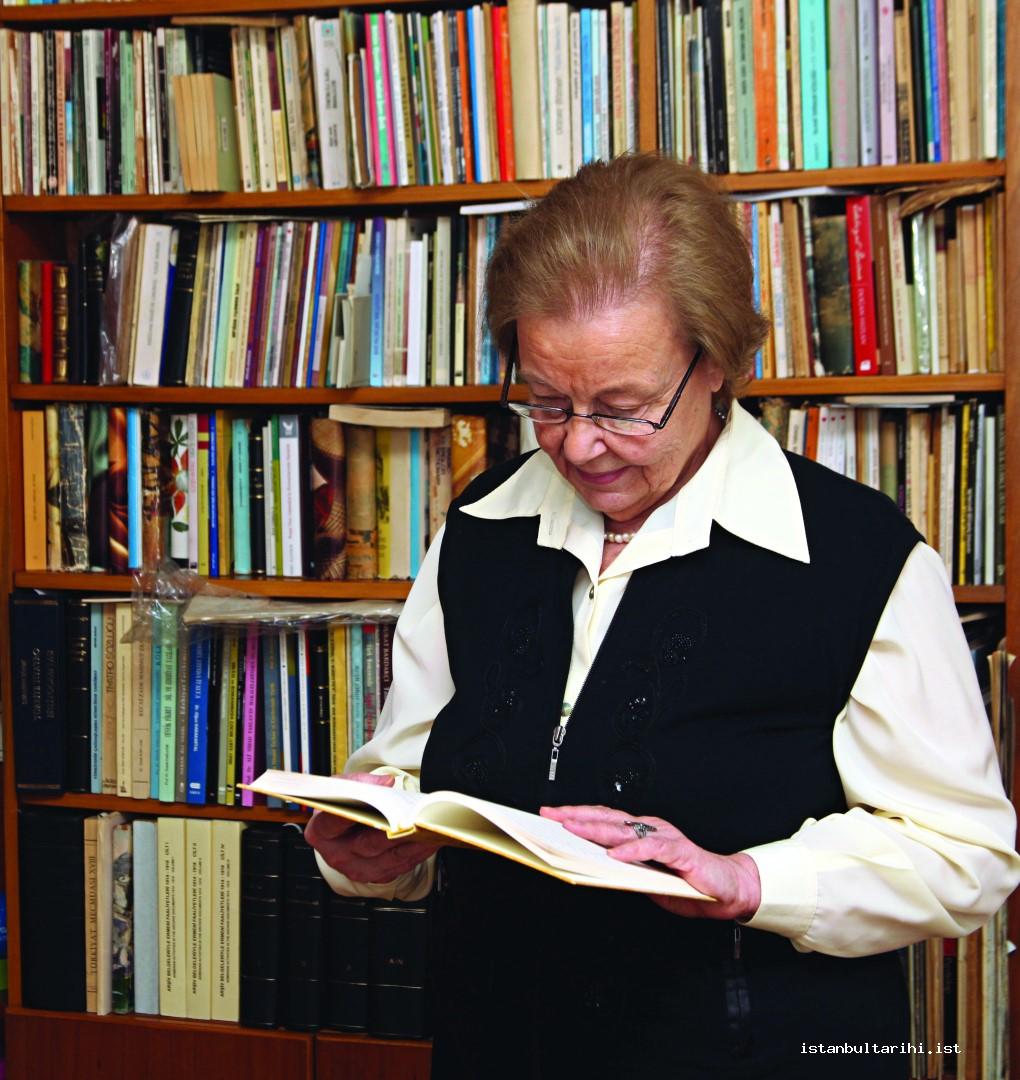
Houses in the past were built in compliance with certain regulations so that they would not block the adjacent houses’ natural light or view . On account of that, there was sunlight in every house.
Indeed, there was sunlight. For example, I remember the dining room next to the kitchen; how beautifully the Malta stones shone. Even as a kid, I noticed their beauty. My uncle also had a house in Draman. A very old, small, modest house. We had become accustomed to very high ceilings in Uzunköprü; its ceilings were very low. But it had a garden with raised flower beds. You could see the Tekfur Palace from that garden. My uncle would carefully water those beds and always grow seasonal flowers.
Did you always live on the Anatolian side?
We always lived on the Anatolian side. Our first location was Çamlıca and we moved twice to houses in that area. We moved from one house to another, so we never had proper furniture. That was the case with houses of civil servants. But I was very lucky. My family took me to every corner of the Bosphorus. It was great. But I also have to ask this question: Should Istanbul have stayed like that? We have never been able to answer this in the affirmative. However, I also think that the city should not have been corrupted so badly. It has been brutally spoiled. Where did the villas in upper Nakkaştepe come from, for example? Those neighborhoods used to be forests. Who chopped down those trees and who granted permission for these buildings? Well, whether you raise any objections or not, nobody is going to listen to you. There is, as it were, an invisible hand that has been destroying this city to the best of its ability. For example, there used to be a very sharp bend in Kandilli many years ago. I loved that bend very much, because there was an amazing view of the Bosphorus from that bend. They rebuilt the road and removed the bend. They could have left it as it was and all that the drivers would have had to do would have been to drive a little more carefully! They sacrificed that beautiful spot. Who gave them that right? They did not find any way to preserve Istanbul; now Istanbul has ceased to be what it was because of the continuously growing number of horrific buildings.
You entered the Turkish Language and Literature Department of Istanbul University. Could you talk about the atmosphere at the Faculty of Literature in those years, the professors, etc.? For instance, you were a student of Ahmet Hamdi Tanpınar. What kind of professor was Tanpınar?
Yes, I was a student of Ahmet Hamdi Tanpınar. As a matter of fact, initially he was not one of the professors who impressed me much. I mean with his clothing, behavior . . . Tanpınar smoked in class; there were no other professors who smoked in class. It was something I found very strange. Additionally, despite his great fluency in Turkish, he kept using loan words from French, and he left his sentences incomplete, thereby conducting lessons that we, his students, could not understand. But when Tanpınar died and Mehmet Kaplan Bey asked us about Ahmed Midhat Efendi’s novels in the final exam at the end of that year -we had written exams then- it was as if I heard Tanpınar dictating the answers to me. So, I understood then that Tanpınar’s lectures had not been disjointed or incomplete. In this regard, my opinion of Tanpınar is very contradictory.
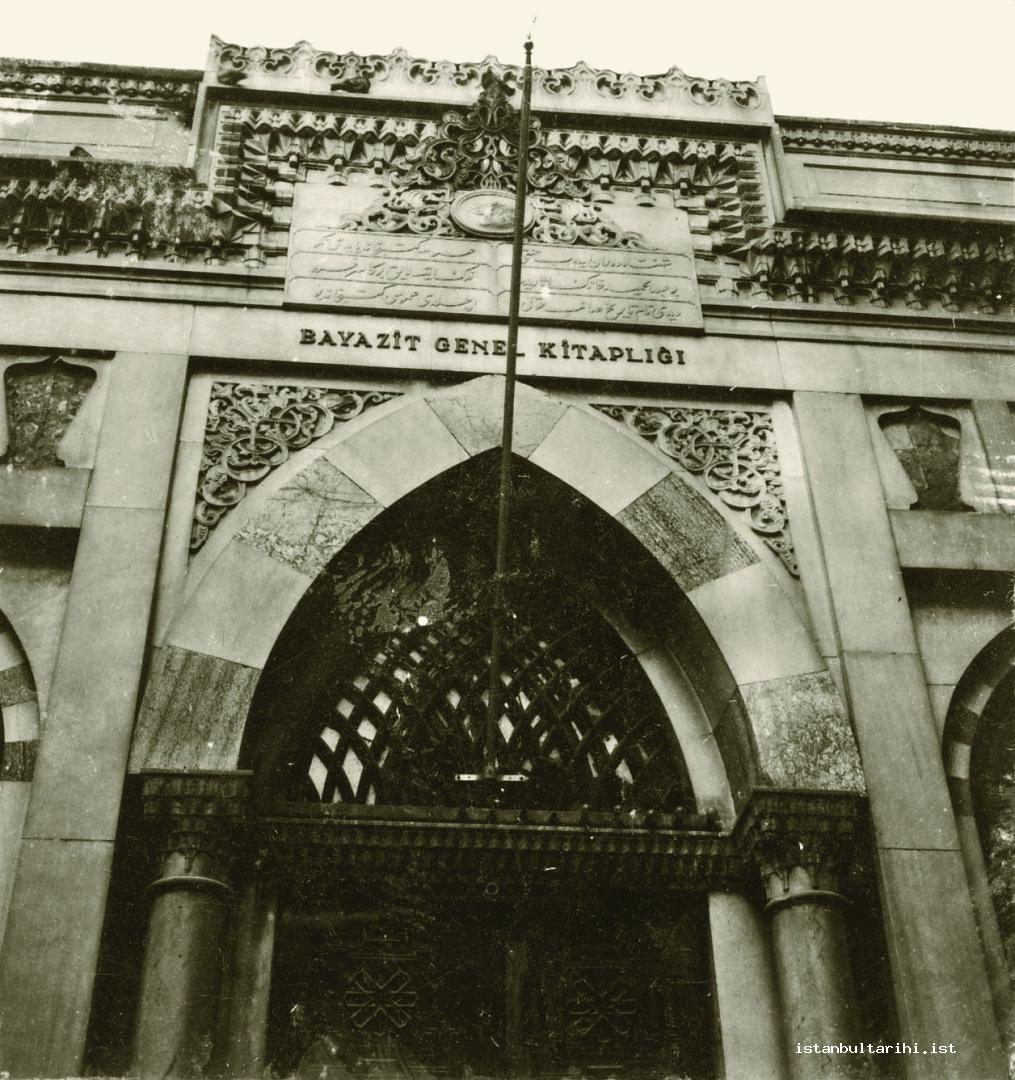
Do you mean to say that although outwardly disjointed, Tanpınar’s lectures had a sort of integrity which was not immediately discernible?
Yes. They were apparently so incredibly coherent that they had a great impact on his students. During one his classes before he died, he lectured us on Ahmed Midhat. Anyway, during that exam, I could not even write about the things I knew which were in Ahmed Midhat’s books because I couldn’t drown out Tanpınar’s voice. I did not want it to stop. Perhaps the shadow of death changes things. At that age, we did not understand certain realities; however outwardly disjointed his style may have been, it apparently had a very strong influence on us.
You became his student toward the end of his life.
Oh yes. I remember some of his classes even now. As I was preparing his diaries for publication, I realized how much effort he had expended in order to give those classes. These are the pleasant things about him. But I have never understood why Tanpınar did not love his students. This was definitely a cause of great disillusionment for me.
What kind of professor was Mehmet Kaplan?
Mehmet Kaplan delivered his classes in an incredibly orderly and integrated manner. Every one of his lectures was coherent. We were captivated by his style from his very first lecture and attended all of his classes. His lectures on Ahmed Haşim and characters in Turkish literature are particularly unforgettable lectures for me. Outside the class we continued to work with Kaplan. We had lunch together every day for years on end. You cannot imagine how many ideas conceived during these meals turned into articles and books. There were many of us who crossed the Bosphorus by ferry and talks would continue on the ferry. For example, I met Zeki Velidi and Ahmet Kutsi Tecer on the ferry. With a five to ten-minute conversation new horizons would open for us.
I guess there were great differences of character and temperament between Mehmet Kaplan and Ahmet Hamdi Tanpınar, who was Kaplan’s teacher.
There were indeed great differences. Tanpınar was disorganized and bohemian to the degree that Kaplan was orderly and conservative. Our faculty had Çeşminur Teyze, may Allah have mercy on her; she apparently loved Tanpınar so much that before he arrived, she would wander the corridors, waiting for him. She looked after our faculty’s corridor. You know Çeşminur Hanım. She was a cleaner, but had been a member of the Ottoman palace at one time. She was working as cleaner to look after her husband. She was such an honorable person. I remember once she said, “Now he should show up!” She would immediately prepare and bring his coffee. Although Kaplan Bey did not have any major health problems, both Tanpınar and those around him had to cope with a great variety of illnesses. This must have been due to their outlook on life and living styles. While Kaplan Bey saw his profession as a way of living, Tanpınar never had enough time to work, even though he would say, “Having a profession and working are good things, they get you into shape.” When he sat at his table to write something, he first had to cope with a thousand obstacles: diseases, debts to be paid, friends he had to inquire after, lectures, meetings...
From what you say, I gather that Tanpınar was not fond of lecturing his students, nor did he care about them much.
I believe that was the case. This crops up often in his diaries. No, he did not like teaching. He himself says, “I don’t like being a teacher at all, but I have the habits of a teacher!” Decades of teaching really gave him many habits that a teacher typically acquires, but he obviously did not like it. On the other hand, if Tanpınar had been a family friend, he could have really unsettled me. I mean, he would have sat at our dinner table and shared our food and then, in the comfort of his home, he would have written negative things about me. That would be very disturbing. But, like I said, Tanpınar was an artist and artists can be excused when it comes to such matters.
What about your other professors? For example, Reşit Rahmeti Arat?
Our teachers were colorful personalities. For instance, I called Ahmet Caferoğlu the Nasreddin Hodja of our corridor. We cannot remember him without laughing and his behavior always became the subject of a joke. I would never have thought that Reşit Rahmeti Bey would influence me so much. In his classes I learned the importance of one’s methodology and of serious work and that discussing language is a very serious matter. We would, as it were, enter a mysterious land during his lectures. The oldest version of words, their structures and pronunciation, which have changed over time, the differences between dialects... He would write all of these in columns on the board, whereby the mysterious journey of a single word became clear as day. Even students like myself -that is, those not interested in philology-grasped the significance of language during his lectures and acquired a sound understanding of it. He was someone who influenced me a lot; you too have probably been influenced by him through his books. Before I actually entered university, I had read articles by Kaplan Bey and Rahmeti Bey that had recently begun to appear in the Türk Yurdu magazine.
But you were more interested in classic literature than modern Turkish literature or the language itself. That’s why your had a closer relationship with Ali Nihat Tarlan.
In our last year at university, Ali Nihat Bey started taking a few of us to the Süleymaniye Library. There, he would show us how to publish a text. He was quite an accomplished man. After I entered the department of Modern Turkish Literature as an assistant, I visited him every week and together we studied the Encümen-i Şu’arâ (society of poets). We used to get together with our teachers in the faculty, in libraries, in the street, on the ferry and also during trips organized by the faculty. Those trips were perhaps the most democratic and cheerful days. I have very fond memories of the trips made to Göksu, Hünkâr Suyu, and Beykoz.
He was a Bektashi dede (dervish sheikh). I only recently found this out.
I knew about this; he was a very sweet man. I also visited him at his home many times. One day I went to his house for a visit, shortly before his death. “Sit down,” he said. “Let’s eat dinner together.” “No, sir, “I said. “I have some work to do, I must go.” “Then we’ll drink coffee,” he said. As we were drinking our coffee, he said, “Once Kaplan wrote something entitled, Tanzir-i Telemak.” “Oh yes, I remember,” I said. “He wants to use it as course material again, but unfortunately we’re unable to find a complete copy of it.” “I know who wrote it,” he said. “Who wrote it, sir?” I asked “I don’t know the name off-hand, but I have the book,” he said. “Sir, do you mind giving it to me?” I asked. “I will give it to you, but only if we eat together.” “Okay,” I said. It was such an important thing. We ate our supper and went downstairs. In the meantime, Kaplan Bey was waiting for me and I worried that he would be angry with me because I was late. Tarlan Bey had a very nice house. We entered his study together. He opened a cupboard, got his keys from there, and opened the display case and took out a notebook. Apparently that was the list of all of the works in his possession. He looked up the book, took the book numbered 126 off the shelf, and said, “Take this.” “Can I give it to Kaplan Bey?” I asked. “Of course, you can,” he said. I put it in my bag, but was so scared that something might happen to the book. There were no taxis there at the time. I slowly made my way by bus. Well, the trouble was that Birol (Emil) Bey had arrived earlier. “Where were you?” he asked. “Sir, I have something very important in my bag now, but if you reprimand me, I shall leave without giving it to you,” I said. I gave him the book. When I told him that Ali Nihat Bey had given the book, he made for the phone box, and called Ali Nihat Bey and thanked him. Such a nice gesture; I will never forget it. It was these people that made Istanbul what it was. Otherwise, you can find sea and trees anywhere. It is not quite possible for people who have not lived in Istanbul for a long time to appreciate this. That’s why they can be so destructive. I believe that architects who have not really lived in Istanbul should not be allowed to work in the city.
You were talking about your work in the Süleymaniye Library.
Oh, yes. There, I entered into the magical world of manuscripts. Our late professor, Ali Nihat Bey, would show us the various copies of the Anthology of Ahmed Pasha’s poems, whose critical edition he had prepared, and he would make us read it, line by line, and he himself would explain the poems. In this way he also identified the differences between the copies. We gained so much from such exercises. Those hours with him were incredibly beautiful. Only a little portion of the garden was visible through the iron window railings in that low-ceilinged, small room. We always worked there in the winter. I can never forget the beauty of a pink rose struggling to survive in the cold and snow of winter. And when spring set in, nature burst forth in abundance, and the roses that blossomed made us yearn to hear the warbling of nightingales. At those moments, we felt the connection between the symbolic language of the Divan literature and the richness of nature enclosed in those gardens. Also, in those hours that we spent together I realized -as we were inspecting miniature manuscripts- how the basis of modern painting had actually been developed by our ancestors. I remember seeing a bright red or a very green horse, which reminded me of Chagall’s horse. And since that time, I have had a yearning that I have been unable to realize: finding couplets from Turkish literature that correspond to certain paintings in modern Western art. For instance, many couplets in Hüsn-ü Aşk correspond to the work of some surrealist painters; thus, I have wanted to collect such couplets. This yearning is to demonstrate how the human mind and imagination flourish in different environments. But just like many other conceived projects, this, too, has been unrealized.
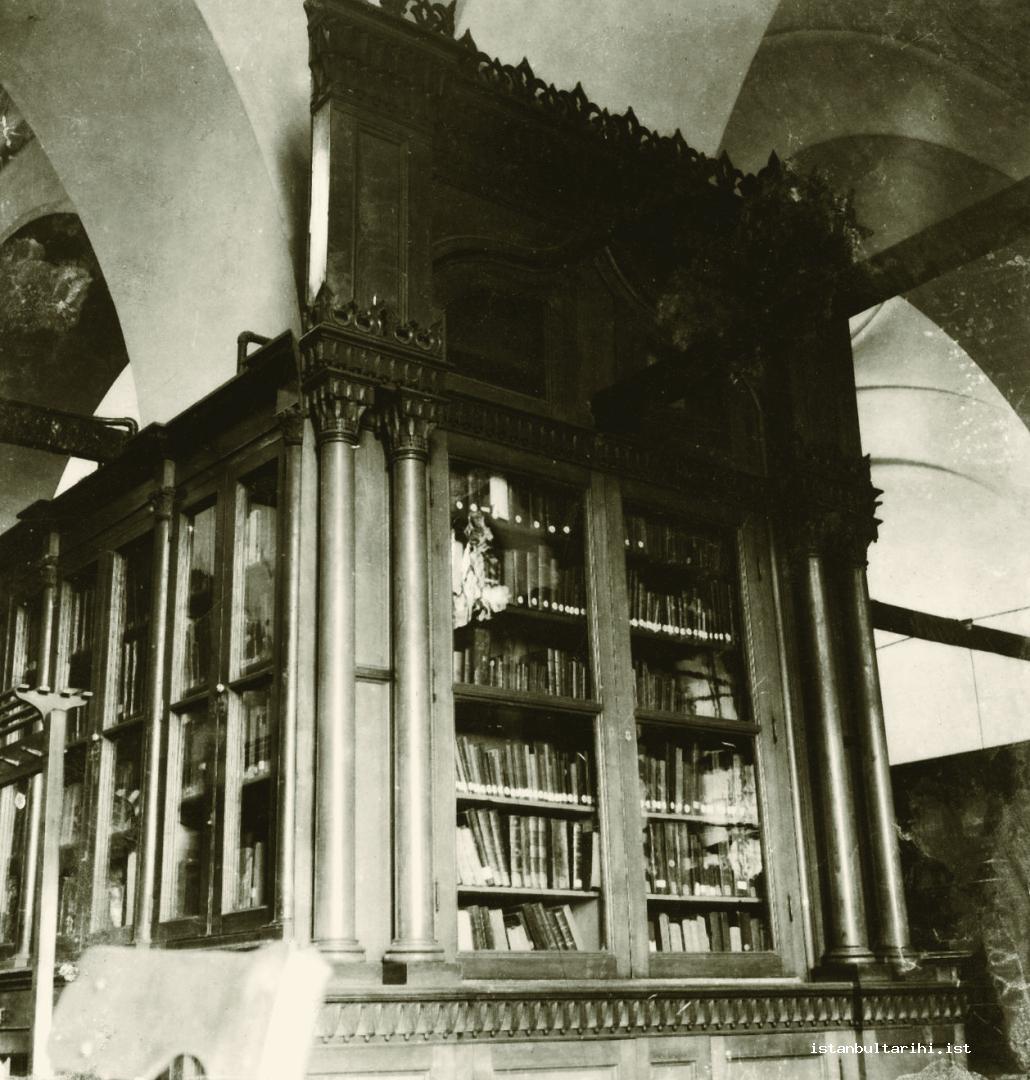
Was this the reason you decided to write your graduation thesis on classical Turkish literature?
I loved classical literature and I still do. I prepared Fetihnāme-i Diyār-ı Arab (account of the conquests in the Arab lands) as my graduation dissertation. It is a gazavāt-nāme (war chronicles) of a person named Silahşor. I prepared it with Fahir İz (d. 2004).
You must have visited the Nuruosmaniye Library during the research phase of your thesis.
I found that library to be a very dark place compared to the bright work environment in Süleymaniye. The light of the books that I read did not yet completely illuminate the physical darkness of the libraries in which I was studying. I still prefer libraries where you can catch some daylight and from where a little greenery is visible.
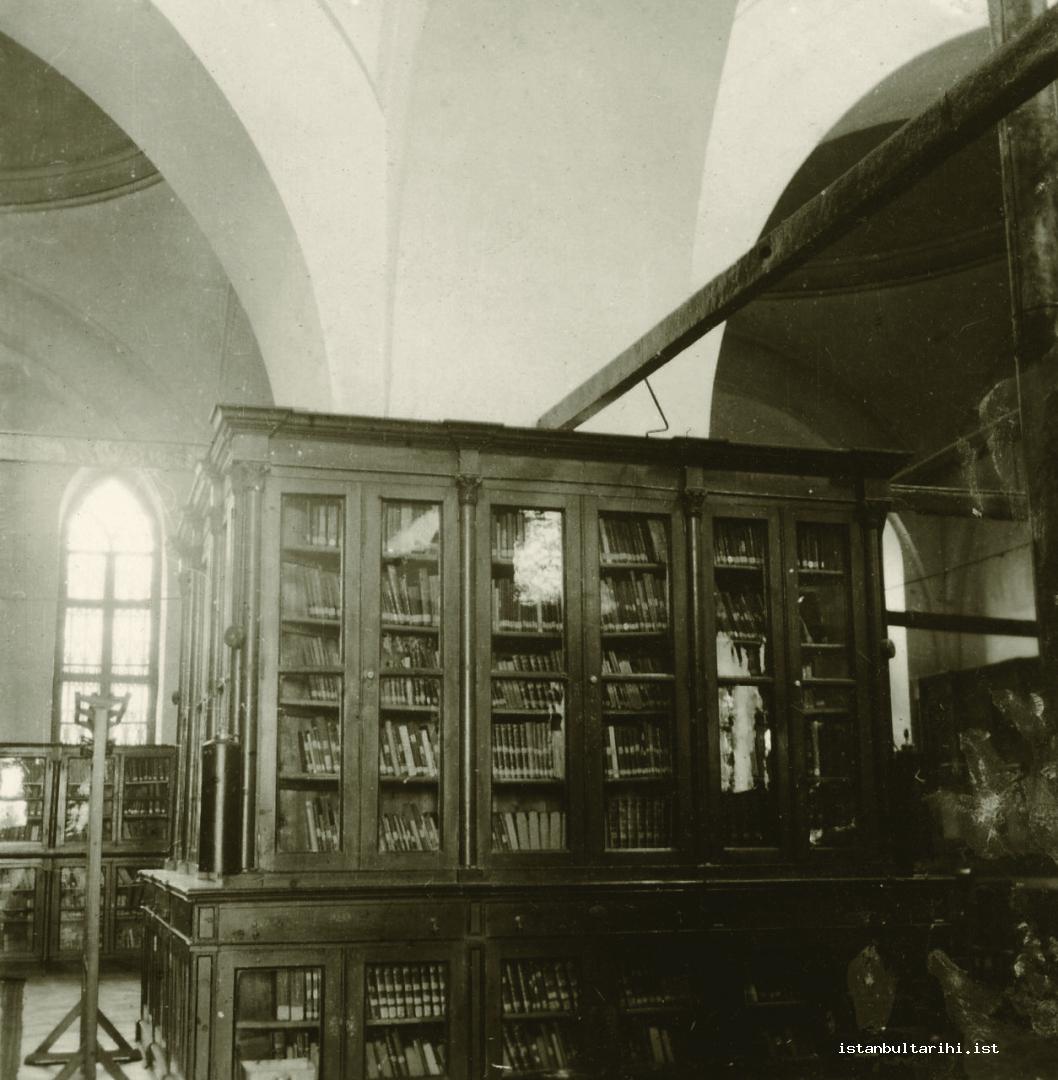
Did you continue studying in the Süleymaniye Library after completing university?
No, as you know, I became an assistant at the Department of Modern Turkish Literature. Afterwards, my visits to the Süleymaniye Library were mostly visits to friends. The material I now needed was in other libraries, for example, the library of Istanbul University.
When we look at your work and the content and nature of your work, we are inevitably led to the conclusion that your life has been spent in libraries. I guess there is not a single Istanbul library you have not entered.
Almost. You know, libraries and museums are my favorite places. I have never felt like a stranger in those places. In those places I have met people, places, and times that I had not known before. I have spent so many hours in libraries that when I look back, it feels as if I have never been elsewhere in my life. I have so many detailed memories about libraries.
I suppose your first love was the seminar library of the Turkish Language and Literature Department at Istanbul University.
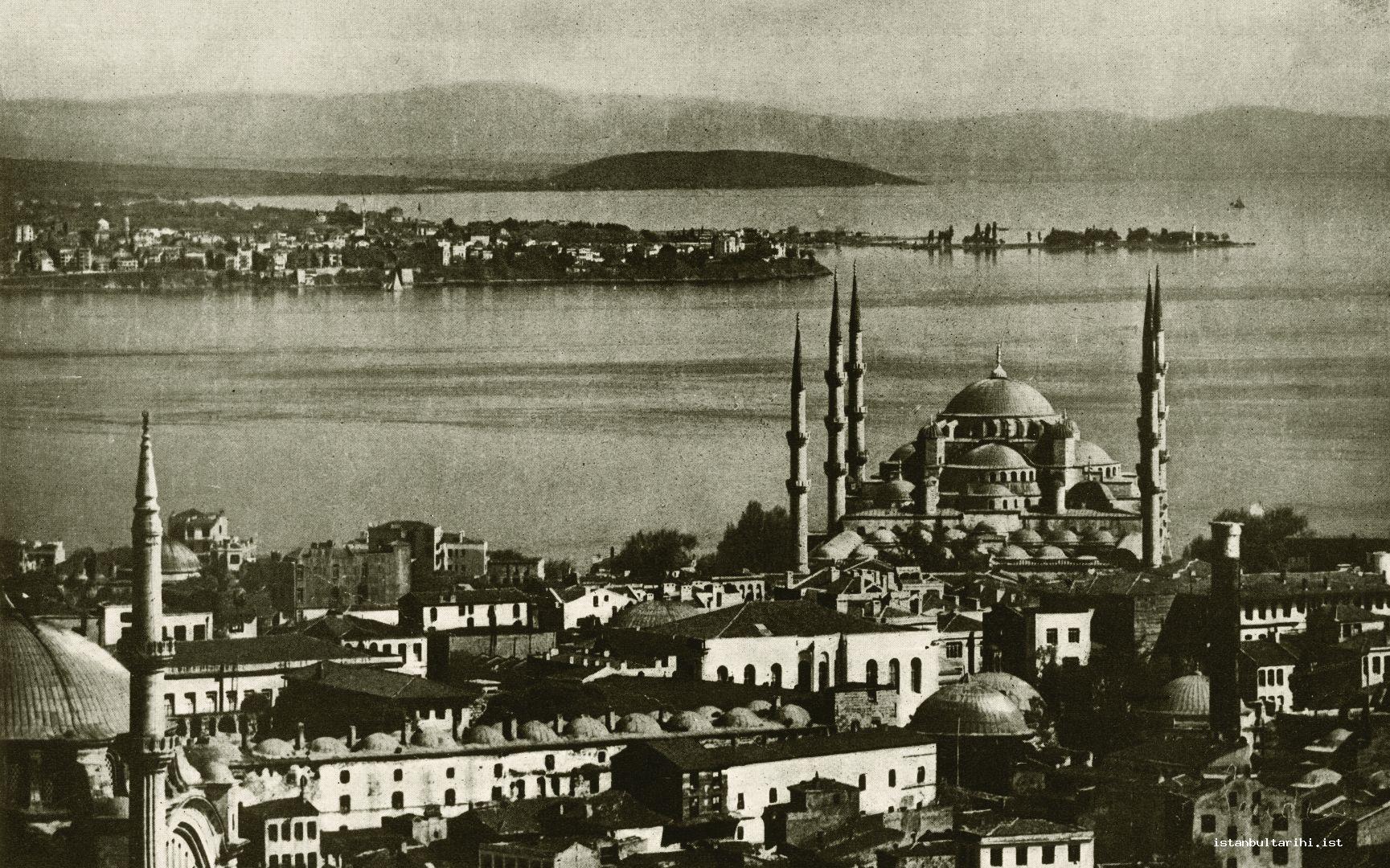
Yes, this was a very well-endowed library. Including the Servet-i Fünūn (Wealth of Sciences) collection, I found many periodicals there and studied them at length. This library was so accessible to us that it could have been considered our personal library, but there were readers who borrowed books and did not return them for a long time, and so we could not benefit from these works. Nevertheless, most of the books that I had to read from my earliest days as a student were available in that library. And of course, Istanbul University’s library. It has been rumored for a long time that it is going to be demolished. This library, which appealed to us with its beautiful old architecture, has unfortunately been greatly neglected. There were many occasions when, after reading a book, we were unable to find it for a second time. This library also had an exquisite small museum inside. I could not hide my admiration when I first saw the many precious works that had been presented to Sultan Abdülhamid II. I was really surprised to see boxes and book covers decorated with precious stones. The exterior of the books was overly adorned, but I did not know what they contained, of course. The interior of a book has always impressed me more than its exterior. But it was still a very fine museum with exquisite articles, notebooks with dried herbs and flowers inside, and writings on the leaves. The magnificent staircase of the library elevated us, as it were, to a miraculous place, to a land of fairy tales.
The director of the library when you began using it was probably Nurettin Kalkandelen, right?
Yes, the first director of the library that I met was Nurettin Kalkandelen. He was a little round man.
He was reportedly the son of Sabri Hoca of Kalkandelen (Tetovo), who saved the library of Yıldız Palace from being plundered by lying in front of its door and challenging the looters, saying, “Over my dead body!”
He was also a very helpful man. In the days when I started collecting texts, it was a very onerous task to copy everything manually. One day I went to Nurettin Bey with my typewriter and asked him if I could use it in the library. He showed me a room and I started typing the texts. At that time, photocopying texts, burning things on CDs, etc., would have been unimaginable. The library of Istanbul University and several other libraries that operated under it -including seminar libraries- can provide little service these days. After the earthquake (in 1999), the library of Istanbul University, which has a large number of works written in our former alphabet, was closed. The things we heard about the library not being a sturdy building were apparently true. But I don’t know why the people in charge did not do anything about it for forty years. If the reports that drew attention to the danger had been processed and if the necessary measures had been taken, would we then have been deprived of this library, which also has great historical value? Another library that I know very well, which contains so many valuable works- the library of the Turkish Language and Literature Department- has also been closed for a very long time because it is understaffed.
Regarding your use of a typewriter, were you treated in other libraries with the same tolerance shown to you by Nurettin Kalkandelen?
Oh, yes, definitely. I was treated the same at the Municipal Library, for instance. The library known then as the Municipal Library was earlier known as the İnkilap Library, and it was in Beyazıt Square.
It was the madrasa of the Beyazıt Complex.
Yes, a madrasa. The largest of the small rooms around the small garden had been designed as a reading hall. It was not easy to study in a library heated by a stove; sometimes the stove would fill the room with smoke and we had to open the door and the windows. Sometimes it became very hot, while at other times we couldn’t even stay warm. When the library staff brought the volumes of newspapers that we wanted to examine and put them on the tables, a dense cloud of dust would rise up. As we turned the pages, you could smell the dampness. When I asked the late director of the library, Orhan Durusoy, whether I could type the texts I needed, he was very surprised and showed me to a room in a hallway to use for a trial period. Then he let me study in a room. On cold days, Orhan Durusoy would allow me to work at a table in his own room. I don’t remember him ever complaining about the noise from the typewriter. I would wear thick, knitted mohair cardigans to keep warm, but I would still feel the cold in my fingertips. I was unable to warm myself in either the Istanbul University or in that library. I sometimes think that the pain in my bones dates back to those cold days. In fact, we did not have to go to any library for new Turkish literature, because the Seminar Library was very well endowed and we benefited from it greatly. The worst thing that YÖK (higher education council) did was to close all the seminar libraries. It was a fantastic library. By the way, there were a lot of old men in the Municipal Library who used to test us incessantly.
You mean the readers?
Sure. We were trying to decipher the old alphabet, letter by letter.
But they had grown up with that alphabet, right?
That’s right. They would breathe down our necks, watch us... “What is this man looking at?!” “Go on, read it for me.” If you could read it, it was okay, and then they would trust you.
One of my professors, Asaf Halet Çelebi, worked in that library as a civil servant. He constantly clashed with Orhan Durusoy. I have examined a file of Çelebi’s that now can be found in the Türk Tarih Kurum (Turkish Historical Society). I also wrote an article entitled, Büyük Bir Şairin Küçük Memur Olarak Portresi (The Portrait of a Great Poet as a Petty Clerk).
I did not see him working there or arguing with Orhan Bey. But I do not doubt that he clashed with Orhan Durusoy. I do not know if Orhan Bey was really a very dour man, but he probably would not have wanted his authority questioned. However, he was on very good terms with me, may Allah have mercy on him. The library staff was so nice that wherever we met by chance outside the library, they would approach, greet me and ask how I was doing.
This event that I mentioned took place at the beginning of the 1950s. I mention the event in case Çelebi’s odd adventures were still occurring during the years when you were using the Municipal Library. Naturally, in that library you wrote the largest portion of the texts which you have written and compiled, did not you?
Yes. I studied there for such a long time. The consideration Orhan Durusoy showed me was demonstrated in the same manner by all his successors, and I remember them all with gratitude. Their understanding made my job considerably easier. The rooms they allotted for us to do our anthology studies were filled with the tapping sound of our typewriter keys for years on end. We knew the library better than all the successors of Orhan Durusoy did, who all came and went. This library also served as our refuge during the tumultuous student movements that began in 1968. We would go out of the faculty and straight into the library. Molotov cocktails exploded outside and we would watch from inside with apprehension. Sometimes we would catch sight of students who had climbed onto the roof of the faculty.
Do you know where the loveliest spot in the library was? The garden on spring and summer days. It was not a well-kept garden but it had a fountain in the middle, where birds would wash in the little puddles, cheerfully chirping. The roses were also very charming and next to the roses were sunflowers as well. On cold days, for example, a single rose that blossomed symbolized to us the beauty that rebelled against all the challenges brought by winter.
Did Orhan Durusoy work in the new building of the library in Taksim as well?
No, he didn’t. But I remember seeing him in Taksim at the groundbreaking ceremony of the building which today is Atatürk Library. His dream was to establish a well-stocked library with a variety of works. Vehbi Koç gave him that chance. Unfortunately Orhan Bey did not live to see the opening of the new library. The library in Taksim, as you know, became richer and richer with each passing day. I like it a lot; I don’t know of any other library with such a beautiful view. It is bright, clean and offers its readers a variety of technical advances. Along with the Hakkı Tarık Us library, this is the best-stocked library in Istanbul, particularly in terms of periodicals. I remember all of the library staff there with gratitude. How many generations of staff have come and gone in that library, where I have continuously studied since 1960. The most disturbing thing in this library in recent years is the people who come in groups and dig into newspaper material on a wide variety of topics. Only a few among them do the job while the rest, forgetting that they are in a library, do nothing but chit-chat loudly. There are also small groups of students who visit. Although they tend to be very noisy, I cannot be angry with them because perhaps some among them may come to love libraries in the future.
I guess you often stopped by the Beyazıt State Library. In Beyazıt, and even in Istanbul, it is the largest library -our first national library.
Of course. Its director, Muzaffer Gökman, also allowed me to use my typewriter. He was actually a bad-tempered man, but I liked him. He liked me as well. He first allowed me to work in a very isolated room, and then he allotted me a room one floor above his. In the reading hall of this library, one could see nothing but books. The vaulted ceiling of this old building was beautiful, but I always wanted to see the sky or the garden as I was studying. For that reason, I did not study much in the hall unless I had to. The hall where the periodicals were was attractive. From there, one could see the garden of Istanbul University, which had plenty of trees. I was shown great affection by Muzaffer Gökman’s successors and all the library staff, and I’d like to particularly mention Hasan Duman, the director who immediately followed Gökman. At this point, we must remember the importance of the cataloging he did for the periodicals printed in Ottoman Turkish. I must also take this opportunity to mention Süheyla Şentürk, who worked in this library for many years, and Erdal Hamami, whom we lost at an early age.
What can you tell us about the Hakkı Tarık Us Library?
The Hakkı Tarık Us Library was in a primary school located behind the Beyazıt Mosque. It was a very well-stocked library in terms of periodicals. Its first director, Sıdıka Karadeniz, spent years trying to classify the books and the periodicals. The officials who came after her, unfortunately, were not interested in books. The person who kept the library open until his death was a janitor named Mehmet Bey, but he was not a librarian. Still, I had very fruitful study sessions in that tiny library.
I know you used this library most often when you were collecting the writings of Ahmed Hāşim.
Yes, I studied there very often, particularly during my post-doctoral studies before I became an associate professor, when I was collecting Ahmed Hāşim’s writings. You know this library was located on a very noisy street. Despite the noise, the study sessions we had were adventures in themselves. I can never forget the help I received from the late Mehmet Bey, who worked there as a janitor. In that hall, where the cold ate into our bones, we met so many people and established deep ties of friendship based on books. Taha Toros, Kerim Sadi, Seyfettin Özege. Hakkı Tarık Us established this library as a waqf so that he could open it, and he himself cataloged and classified all of the works there; yet the measures he took in order to maintain his library unfortunately were not sufficient. While drawing up the vakfiye (waqf charter), he apparently forgot the most essential factor, the human factor. His heirs were interested neither in books, nor in what he had wanted. All of the books and periodicals were transferred to the Beyazit State Library, where they have thankfully survived.
The primary feature of the Beyazıt State Library is that it is a derleme library (special collections library) and thus contains a great variety of books. When the books and the periodicals were transferred there, the Beyazıt State Library came to own a very rich collection of periodicals. The Millet Library operated here as well for a while after the earthquake in 1999. When the Millet Library was repaired, it continued to serve people in its own building. This too is an old building. Its garden is an inner courtyard. It has a fountain. Its director, Melek Gençboyacı, who is so eager to help people, and Kadir Bey, who has been associated with the library for many years, are some of the friendly faces that we see as we step into the library. The complete collection of a number of periodicals can be found only in the Millet Library, and sometimes we come across works that we would never think we would see there.
The conditions in today’s libraries are now very good. I guess you endured some hardships studying in those old libraries.
That’s for sure! The buildings were so cold that I can feel that cold even now. The space was always poorly lit. Everywhere was covered with dust. I even came down with pharyngitis from turning the dusty pages and required lengthy treatment. There were disrespectful and rude officials -however few in number they may have been. We were unable to find a clean sink to wash our hands. Despite all these problems, there were people who never disrupted their service to readers and who were always helpful, and for this I always express my gratitude and thanks. In all my study sessions in the last half century, you can find their anonymous assistance. Studying in libraries is a kind of adventure. It was often the case that I went to the library to research one particular topic, and came out with a lot of notes on other topics.
I’d like to thank you for this delightful conversation.
